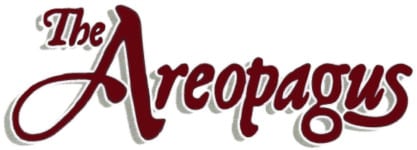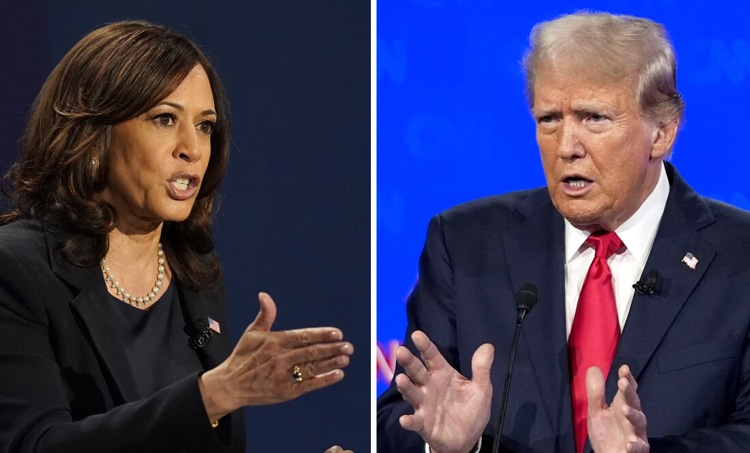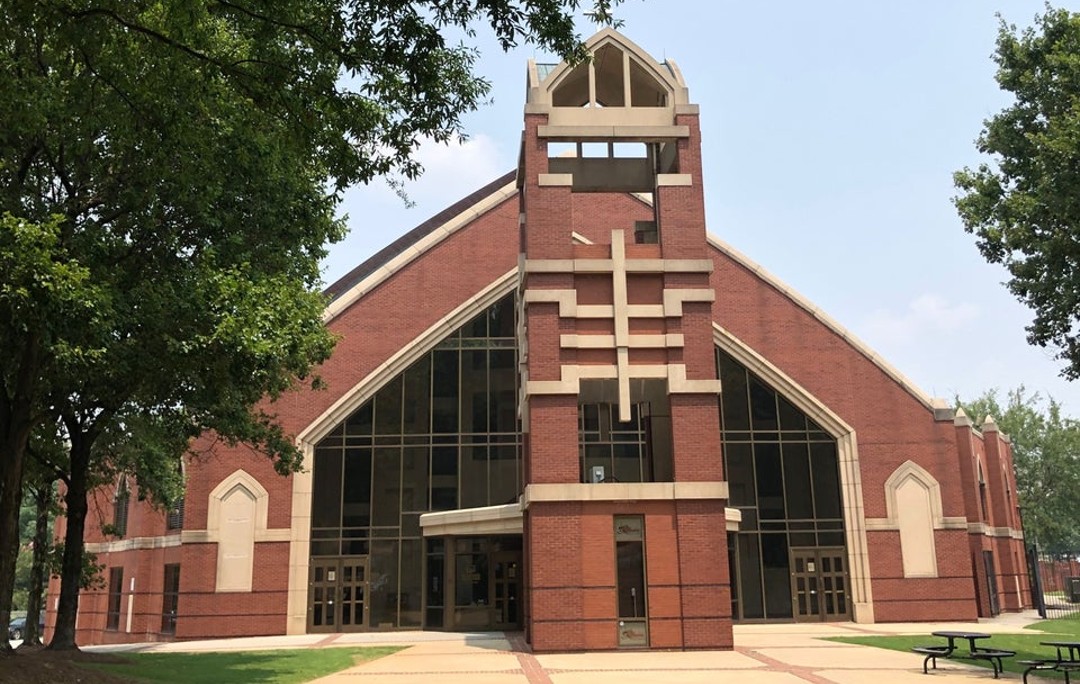
Ruminations on Gettysburg
Jefrey D. Breshears (July 9, 2013)
Trip of a Lifetime
I recently returned from a trip to Gettysburg for the commemoration of the 150th anniversary of the greatest battle of the Civil War and one that largely determined the fate of America. Our group included my wife, Dollie, one of our Areopagus board members, Eric Smith, and other friends. When we planned the trip, the two things that I feared most was that the weather would be unbearably hot and that the infrastructure and facilities in the town and at the reenactment site would be overwhelmed by all the visitors. Both turned out to be true.
 We left Atlanta in two vans on Wednesday, July 3rd and arrived in Gettysburg in the afternoon of July 4th. As I had feared, the town was absolutely swamped by an estimated 250,000 visitors. (Obviously, we weren’t the only ones who had this idea.) On Friday we had scheduled a 6-hour tour of the Gettysburg battlefield with a tour guide. We drove out to the Lutheran Seminary west of town where the battle first began, after which we visited Little Round Top and Culp’s Hill before walking Pickett’s Charge, the climactic final encounter of the three-day-long battle that sealed the fate the Confederacy.
We left Atlanta in two vans on Wednesday, July 3rd and arrived in Gettysburg in the afternoon of July 4th. As I had feared, the town was absolutely swamped by an estimated 250,000 visitors. (Obviously, we weren’t the only ones who had this idea.) On Friday we had scheduled a 6-hour tour of the Gettysburg battlefield with a tour guide. We drove out to the Lutheran Seminary west of town where the battle first began, after which we visited Little Round Top and Culp’s Hill before walking Pickett’s Charge, the climactic final encounter of the three-day-long battle that sealed the fate the Confederacy.
On Saturday we experienced various reenactments of the battle at the reenactment site, a large farm a few miles north of Gettysburg that included about 20 acres set aside for soldiers and sutlers to pitch their tents along with a couple of large tents for lectures and Q&A sessions with various reenactors impersonating Robert E. Lee, George Meade, James Longstreet, Joshua Lawrence Chamberlain, J.E.B. Stuart, and other notables associated with the battle.
 On Sunday morning some of us attended Christ Lutheran Church in Gettysburg, founded by Rev. Samuel Schumacher, one of the most significant leaders in early American Lutheranism and a co-founder of the Lutheran Seminary in Gettysburg. After church, we returned to the reenactment site for the climax: Pickett’s Charge. The reenactment began with a 35-minute artillery barrage by 135 cannons, both Confederate and Union. The Rebels were about a quarter of a mile away, across a broad field that somewhat resembled the actual battlefield on which Pickett’s Charge took place. Then several thousand of them emerged from the woods, formed ranks, and began the long and fateful march across the open ground. Some fell along the way, and the closer they approached, the more there were who dropped to the ground. Then, once they climbed over the split-rail fence a hundred yards from the Federal lines and began their final assault, thousands of muskets opened fire from the ranks crouching behind a low stone wall. As in the real battle, the field was thick with black powder smoke, and in a matter of a few minutes the Confederate army disintegrated. When the smoke finally drifted away, and the field was strewn with thousands of dead and wounded Rebels while the victorious Yankees shook their fists and chanted, “Fredericksburg! Fredericksburg! Fredericksburg!†– a reference to the horrible battle a few months earlier in which the Confederates had held the high ground behind a stone wall and mowed down wave after wave of Union brigades that charged their position.
On Sunday morning some of us attended Christ Lutheran Church in Gettysburg, founded by Rev. Samuel Schumacher, one of the most significant leaders in early American Lutheranism and a co-founder of the Lutheran Seminary in Gettysburg. After church, we returned to the reenactment site for the climax: Pickett’s Charge. The reenactment began with a 35-minute artillery barrage by 135 cannons, both Confederate and Union. The Rebels were about a quarter of a mile away, across a broad field that somewhat resembled the actual battlefield on which Pickett’s Charge took place. Then several thousand of them emerged from the woods, formed ranks, and began the long and fateful march across the open ground. Some fell along the way, and the closer they approached, the more there were who dropped to the ground. Then, once they climbed over the split-rail fence a hundred yards from the Federal lines and began their final assault, thousands of muskets opened fire from the ranks crouching behind a low stone wall. As in the real battle, the field was thick with black powder smoke, and in a matter of a few minutes the Confederate army disintegrated. When the smoke finally drifted away, and the field was strewn with thousands of dead and wounded Rebels while the victorious Yankees shook their fists and chanted, “Fredericksburg! Fredericksburg! Fredericksburg!†– a reference to the horrible battle a few months earlier in which the Confederates had held the high ground behind a stone wall and mowed down wave after wave of Union brigades that charged their position.
Not one minute after the reenactment ended, a torrential rainstorm moved in that lasted for several hours – reminiscent of the storms that erupted after the real Battle of Gettysburg that covered the Confederate retreat back into Virginia. Our group, which was scattered all around the reenactment site, had planned to rendezvous at a tent near the front entrance at 5 o’clock, but we were engulfed in the chaos of thousands of people fleeing toward their cars in the parking lot or the buses that were waiting outside the gate to shuttle visitors back to the various parking lots around the area. Amid all the sound and fury, our cell phones went haywire, which made communication nearly impossible. After about 40 minutes we finally accounted for everyone in our party, and we drove back to our hotel in Westminster, Maryland, about 20 miles away.
Ruminations
 There will never be another Civil War reenactment on such a grand scale in my lifetime. The town of Gettysburg had been planning this anniversary for many years, and it was truly a spectacular extravaganza. Unfortunately, the town and its infrastructure weren’t able to handle such overwhelming crowds, which prompted me on one occasion to remark, “This is like a Civil War Woodstock!†But in many ways this was an ideal experience in the sense that, like the poor soldiers who suffered through the battle 150 years ago, we endured 3 days of miserable and oppressive heat during our visit to Gettysburg. (In fact, the temperature on the day of Pickett’s Charge was almost identical to what it had been in 1863.) And like the Confederate Army at Gettysburg, our group experienced a communications breakdown that led to a very disorganized retreat back to the buses and our vans. In all honesty, I would never want to do this again. But I am also very grateful that we had this opportunity. It was truly a memorable and meaningful trip.
There will never be another Civil War reenactment on such a grand scale in my lifetime. The town of Gettysburg had been planning this anniversary for many years, and it was truly a spectacular extravaganza. Unfortunately, the town and its infrastructure weren’t able to handle such overwhelming crowds, which prompted me on one occasion to remark, “This is like a Civil War Woodstock!†But in many ways this was an ideal experience in the sense that, like the poor soldiers who suffered through the battle 150 years ago, we endured 3 days of miserable and oppressive heat during our visit to Gettysburg. (In fact, the temperature on the day of Pickett’s Charge was almost identical to what it had been in 1863.) And like the Confederate Army at Gettysburg, our group experienced a communications breakdown that led to a very disorganized retreat back to the buses and our vans. In all honesty, I would never want to do this again. But I am also very grateful that we had this opportunity. It was truly a memorable and meaningful trip.
In my opinion, the whole 5-day excursion was worthwhile just for the last 10 minutes or so of Pickett’s Charge. With nearly 13,000 reenactors on the field, one could imagine to some extent what the spectacle must have been like when it actually occurred. After the battle, Union soldiers on Cemetery Ridge commented that when they saw the Confederate regiments forming in the fields nearly a mile away and marching toward them with their flags unfurled and bugles sounding, it looked like a grand parade. But of course those men were coming to kill them, so their sense of awe soon turned to determined resistance. What I experienced at Gettysburg was, of course, not reality but merely a dramatized reenactment. But nonetheless, despite my pro-Union sympathies (two of my great grandfathers fought in the same Union cavalry regiment in Southwest Missouri during the war), I have to say that my heart sank when I saw those Confederate regiments annihilated in a matter of just a few minutes amid a withering barrage of cannister fire and the discharge of thousands of Yankee rifles. Pickett’s Charge was the “high-water mark†of the Confederacy as they nearly broke through the Union lines at Gettysburg, but the assault broke the back of the Southern army. Although the war dragged on for nearly two more years, Lee’s Army of Northern Virginia never again won a major battle.
When we ruminate on the Civil War, we often focus on the amazing courage, honor and endurance of the men who fought and sacrificed their lives for principles that they believed. But we shouldn’t forget that the Civil War also brought on the greatest slaughter of Protestant Christians by other Protestant Christians in all of history. It was the result of a political breakdown in America, but it was also the result of a great moral and spiritual failure. I place the blame primarily on Christian leaders and churches who failed to provide a strong and consistent biblically-based prophetic witness in the midst of a proud, contentious and stubborn people in both the North and the South who were more interested in personal gain and the protection of their own private interests than in building a moral society based on liberty and justice for all Americans.
Today, we face the greatest challenge to American society and culture since the Civil War. When Barack Obama was elected president, he vowed to “fundamentally transform†America. He is largely succeeding due to strong support from a powerful coalition: a compliant and biased media establishment; the education establishment; radical leftists who dominate American entertainment and popular culture; labor unions; liberal activists; proponents of fascist-style authoritarian government; anti- Christian secularists; social liberals pushing an irrational and immoral PC agenda; welfare entitlement addicts demanding more public funding of their lifestyle; and racialists who are incapable of processing anything except through a racial prism. Most distressingly, Obama and his allies are winning mostly by default and in large measure because so many Christians, including so many Christian leaders, are so uninformed and unengaged.
The America of today is not the nation that it once was. The thousands of folks who stood and joined in singing “The Star Spangled Banner†before the reenactments at Gettysburg last week do not represent a cross-section of America. They are a diminishing minority of Americans who value history and admire the courage and honor of those who, as Lincoln remarked in the Gettysburg Address, gave their “last full measure of devotion†to causes and principles for which they believed. Misguided or not, they served sacrificially for something higher and nobler than their own materialistic and hedonistic comforts and their own egoistic self-gratification. And in that regard, as Lincoln also noted, “it is altogether fitting and proper†that we should so honor them.




